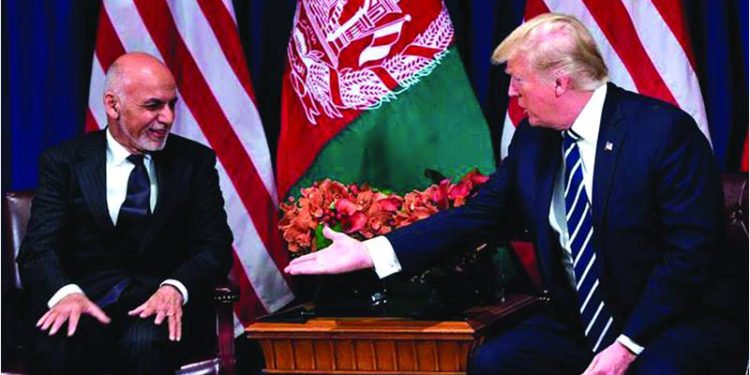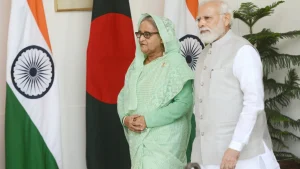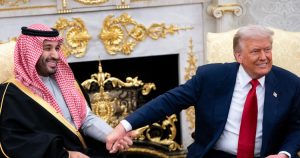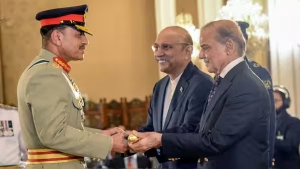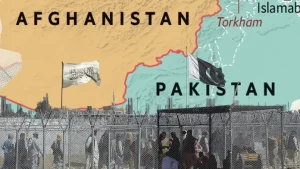By Syeda Mamoona Rubab
Syeda Mamoona Rubab looks at all the factors that are obstructing a peace agreement in Afghanistan
Talks between the United States and Taliban over a peace deal have resumed in Doha after a hiatus of nearly three months, but the prospects for lasting peace in Afghanistan remain uncertain.
The meeting in Doha between the two sides, which was in its fifth day at the time of the writing of this article, marked their first official contact since President Donald Trump in September declared the process with the insurgent group “dead” despite being close to a near-certain deal. Both sides have, however, informally remained in contact with each other during the pause, including their meeting in Islamabad in October.
The resumption of talks followed President Trump’s unannounced visit to Afghanistan on Thanksgiving Day.
Interestingly, the Taliban delegation for the current round of the talks with US includes Anas Haqqani, a Haqqani Network commander and younger brother of Taliban deputy chief Siraj Haqqani, who was released from jail by Afghan authorities three weeks ago in exchange for Western hostages held by the insurgent group. Many think that the hostage deal helped in resumption of the talks.
Taliban, at the start of the talks last weekend, said that they would be picking up threads from where they broke off in September. Reportedly they were then close to signing a deal that would have seen US withdraw its near 12,000 troops from Afghanistan after counter-terrorism assurances by Taliban under which they (Taliban) would commit to not letting Afghan soil be used by terrorist groups like Al-Qaeda. However, things have changed a bit during the 12-week suspension. Newer conditions have come up for signing of the agreement.
The Taliban delegation for the current round of talks with US includes Anas Haqqani, a Haqqani Network commander and younger brother of Taliban deputy chief Siraj Haqqani
In the current round, the discussions are focused on reduction in violence, an eventual ceasefire, and assurances on commencement of an intra-Afghan process as pre-conditions for the deal. Taliban appear to be open to discussing reduction in violence, but want the ceasefire to be left to the intra-Afghan talks, whenever they take place subsequent to a US-Taliban deal. The Americans, on the other hand, want a settlement on all these three issues before inking any agreement because it is presumed that otherwise there would be no incentive for the Taliban, especially in view of their militarily dominant position.
President Trump, during his latest Afghanistan trip, emphasized the necessity of a ceasefire, which is also one of the major demands of Afghan government for starting the intra-Afghan process.
The complication in negotiating a ceasefire for withdrawal of troops was best described by former US commander in Afghanistan Gen John Nicholson, who was quoted in media reports to have said: “The ceasefire on the part of the Taliban, as some of them have said publicly, reduces their leverage. Well, a troop withdrawal on the part of the coalition reduces our military leverage.”
Release of previously unpublished “confidential” documents about the war in Afghanistan by Washington Post on Monday, while the talks with Taliban were continuing in Doha, potentially weakened the American delegation’s position in the negotiations since the expose disclosed how the American officials falsely reported on the war up their chain of command and to the public. Taliban were already distrustful about the Americans, especially after the breakdown in September and this disclosure would add to their suspicions if their interlocutors were acting with honesty.
Taliban, moreover, believe that the Americans would soon withdraw from Afghanistan irrespective of the outcome of their negotiations. This assumption is based on some of the recent developments and statements by President Trump on different occasions. Trump, for instance in last August, while expressing his desire for a pull out, said that he would like to do so “as quickly as we can.”
US Commander in Afghanistan Gen Scott Miller had, meanwhile, in October disclosed that US was quietly withdrawing troops from Afghanistan even without an agreement with Taliban and had pulled out nearly 2,000 of them, bringing down the numbers from 14,000 to 12,000. Separately, there have been reports that Pentagon has put together contingency plans for an abrupt withdrawal.
This situation, besides taking away the incentive from Taliban for seeking a successful conclusion of the negotiations, has left ordinary Afghans worried about the possibility of Americans exiting Afghanistan without a political settlement, while possibly compromising the progress made by the Afghan society since Taliban were ousted from power in 2001.
Further complicating the situation is the absence of a plan or vision for a post-US withdrawal Afghanistan. Although Taliban are at the forefront demanding US pull out, they have never indicated what they envision for their country’s future. Similarly, Afghan government and mainstream political parties are yet to suggest the kind of political arrangement they could offer to the Taliban.
The unending delay in announcement of results of presidential elections held in September is yet another complicating factor in the path towards peace.
Therefore, it can be easily concluded that peace in Afghanistan will take more than just an accord between Taliban and US.
The writer is a senior researcher at Islamabad Policy Institute. She can be reached at mamoona.rubab@ipi.org.pk




